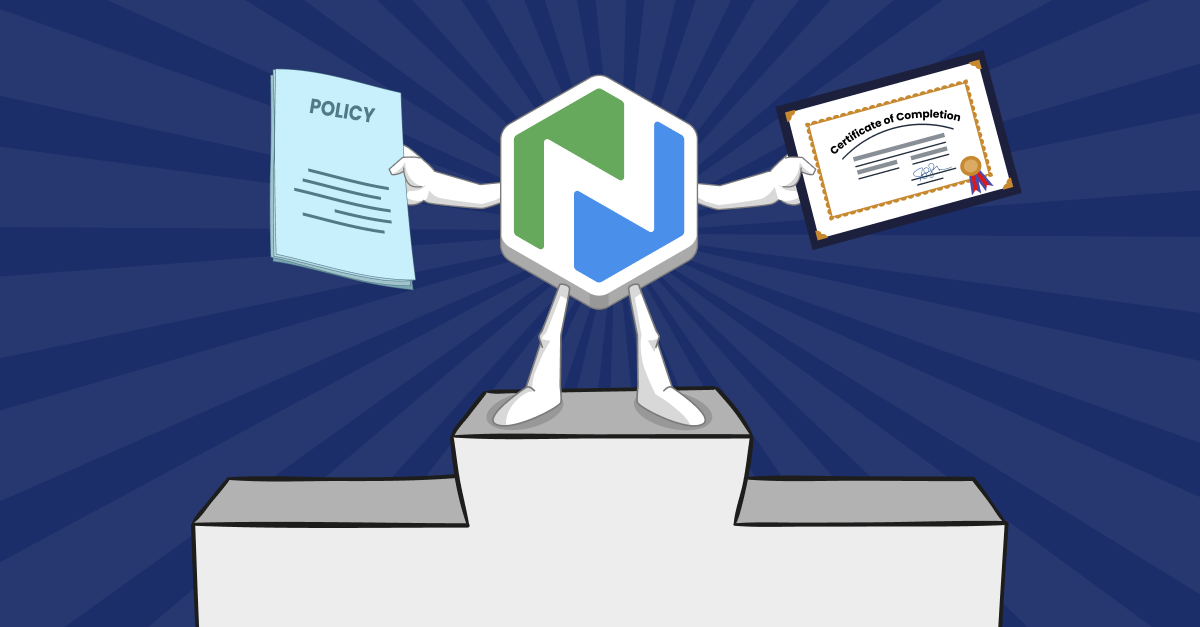Storytelling: How to Make Training Memorable and Meaningful
Learn how to craft compelling stories that make training stick—with six key elements you can use in just about any scenario.

What sticks with you longer: a safety checklist or a story of how one of those protocols saved someone from harm? If you chose the story, I’m not surprised.
Storytelling is powerful. But it’s often underused in training because even though many people like the idea of storytelling, they aren’t sure how to do it well.
Let’s explore how to change that. We’ll break down what makes a training story effective and how you can put it to work.
Why Storytelling Works—it's Science
Stories engage the brain in ways lists and lectures can’t. According to neuroscience, storytelling activates multiple brain regions—emotional, sensory, and cognitive. That means learners don’t just hear the lesson. They feel it.
Storytelling:
- Captures attention through curiosity and tension (“What happens next?”)
- Builds empathy and motivation through emotional connection
- Makes policies and procedures relatable—abstract ideas become concrete
- Improves retention and recall of important information
That’s why stories aren’t just fluff—they’re one of the most powerful training tools you’ve got.
6 Elements that Make a Story Great
By applying these elements, just about anyone can craft compelling stories.
1. Structure Your Story Like a Journey
Great training stories follow a familiar pattern:
- Beginning: Introduce a relatable character in a specific setting
- Middle: Present a real-world challenge or moment of tension
- End: Show the resolution—linked to the training takeaway
Here’s how that might break down:
| Story Element | Training Purpose | Example |
|---|---|---|
| Character | Make it relatable | A new volunteer on their first library shift |
| Conflict | Introduce real tension or risk | Unsure how to help a frustrated patron |
| Resolution | Show behavior/learning in action | Remembers training and calmly offers a solution |
2. Anchor the Story in a Real Place
Place matters. Stories come to life when learners can picture where they’re happening. A few specific details, such as the morning commute on the train, a bustling intake room, or a noisy breakroom—are often all it takes to help someone feel like they’re there.
Why does this matter? Because mental imagery strengthens recall. When a story is grounded in a location your learners can easily imagine, they put themselves in the picture.
Examples:
- "In the pantry, where the air always smells like coffee and dry cereal…"
- "Near the front desk, just before closing, when things tend to get loud and rushed…"
Specificity invites people into the story. And once they’re in, they’ll remember what they learned there.
3. Start in the Action
Skip the warm-up. Drop us into the moment. Instead of spending time on setup or background, pull your learners straight into something happening. This could be a glance, a mistake, a raised voice—anything with energy and movement.
Why? Because action creates urgency and interest. We’re naturally wired to wonder: "What’s going on here?"
Here’s a quick contrast:
- "Elena was a new volunteer. She had been assigned to check-in duties."
- "Elena stared at the clipboard, her pen hovering. A line of guests was forming, and she couldn’t remember the second step."
The second version builds tension and puts the learner in Elena’s shoes. No build-up needed. Just a clear moment, mid-scene, that gives us a reason to care.
4. Show, Don’t Just Tell
Don’t just say what someone feels—show it through descriptive words. This is one of the most powerful (and often underused) principles in training stories. When you illustrate emotions or traits through action, body language, or dialogue, the story becomes far more engaging—and memorable.
Instead of telling learners that someone was frustrated, show us what it looked like:
"She rubbed her temples, jaw clenched. ‘I’ve already explained this twice,’ she thought."
That detail lets the learner see the moment unfold—and it sticks.
Why does this matter? Because emotion fuels memory. Neuroscience tells us that when we visualize a scene or empathize with a character, we’re more likely to retain what we learn. Showing emotion through behaviors gives learners a mental snapshot they can recall later, especially in moments of stress or uncertainty.
More examples:
- Original: "He was nervous about using the new software."
Revised: "His hands hovered above the mouse. He sighed, then clicked ‘Submit’—and held his breath." - Original: "The patron was angry."
Revised: "She slapped her library card on the counter. ‘This is the third time this month,’ she snapped."
These moments don’t need to be long—but they do need to feel real. Showing helps learners feel what it’s like to be in that situation, which is what makes training memorable.
5. Highlight What’s at Stake
Every good story has stakes. There has to be something to lose (or gain) for the story to feel meaningful. In training, this could be a person’s dignity, a safety issue, or a lost opportunity to connect.
Learners are more likely to remember what’s important when they feel what’s at risk. Think beyond the task: what could go wrong, or what might go right, if someone makes a certain decision?
Example:
"When Anthony forgot to call the client for their housing appointment, it wasn’t just a mistake—it set their application back two weeks. That delay meant another night in the shelter."
Stakes humanize policies. They remind learners that what they do matters.
6. Create Characters Learners Recognize
Training stories work best when learners can see themselves or someone they know in the story. That doesn’t mean dramatic heroes. It means realistic humans with ordinary challenges.
When characters feel familiar, learners build empathy. That emotional connection improves both understanding and retention.
Try using:
- A library assistant balancing a full cart and a patron's request
- A case manager navigating two policies at once
- A museum volunteer trying to explain a sensitive exhibit to a confused visitor
And don’t forget dialogue. A line like:
"You’re doing really well. I was overwhelmed my first week, too." feels real—and stays with people longer than abstract reassurance.
Familiarity plus emotional truth equals memorability.
Bonus Tip: Try giving your characters distinct voices through their dialogue. A slight change in tone or word choice can make the conversation more engaging—and more real.
Bringing It to Life: A Before-and-After
Let’s look at how a simple story changes when we apply the six elements:
Before:
“Maria is a new library volunteer. She learns how to check out books and help patrons. One day, she helps a child find a book and feels proud.”
After:
“Maria balanced a stack of returns in her arms when a boy tugged at her sleeve. ‘Do you have any books about space?’ he asked, eyes wide. She hesitated—this was her first shift. But she remembered the training tip about using subject keywords. A minute later, they were flipping through a picture book on planets. As he walked away, beaming, she realized: she could do this.”
The structure, emotion, specificity, and stakes turn a flat report into something learners can feel and remember.
How to Use Storytelling in Your Training Programs
Storytelling can fit into nearly any topic.
Use Stories In:
- Onboarding: Open with a mission-centered story of impact. Share a real-world example with a positive outcome, and help the learner picture themselves in that role.
- Soft Skills Training: Use dialogue to model empathy or de-escalation. Show what a thoughtful, clear conversation sounds like—and where it can go off track.
- Compliance Modules: Share anonymous cautionary tales. Swap out rule lists for short, true stories (anonymous) that show the real-world results of missed steps.
- Scenario-Based Learning: Present choices and show what happens next. Let learners learn by doing.
Storytelling can make training more accessible and meaningful—especially for learners who connect best through real-life examples and relationships.
Final Thought: Stories Build More Than Skills—They Build Meaning
Training isn’t just about transferring information; it’s about shaping how people see their role, their impact, and their mission. When you embed storytelling into your approach, you bridge the gap between knowing what to do and caring enough to do it well.
So next time your training feels flat or forgettable, ask yourself:
- Who is this story about?
- What matters to them?
- What will we feel when we hear it?
That’s where the real learning—and transformation—happens.
.png)
.png)
.png)

.png)
.png)
.png)

.png)
.png)

.png)